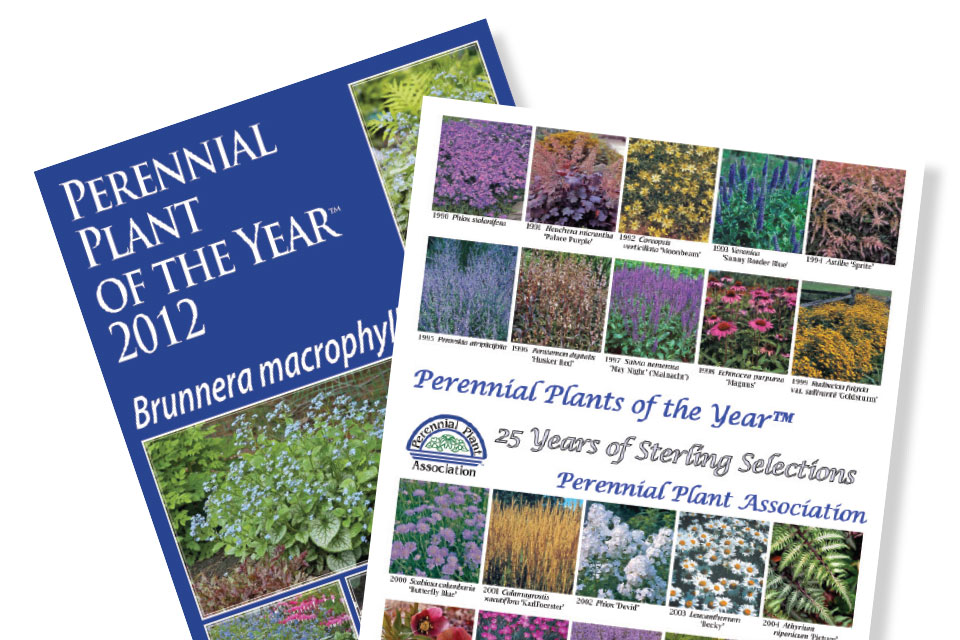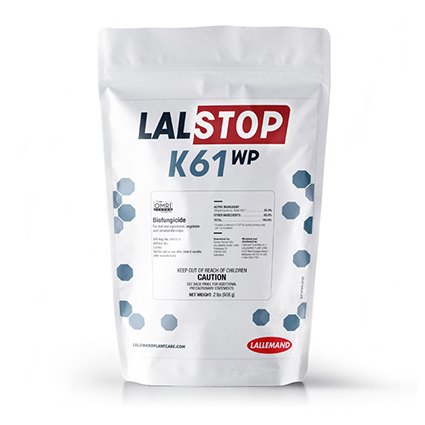Perennial Plant Association Wins The 2015 Excellence In Marketing Award

Retailers have traditionally
embraced Perennial Plant Of The
Year marketing materials.
Thirty-one years ago, Dr. Steven Still and Dr. Elton Smith of The Ohio State University had a series of discussions about the need to teach growers how to propagate perennials. At that time, you needed a good propagator on staff to handle perennial stem and root cuttings, and a lot of growers lacked that expertise.
And so the Perennial Plant Association (PPA) came to be, and it’s no coincidence that the popularity of perennials has grown along side PPA.
A lot has changed in the years since 1984, although Still remains as the organization’s executive director. What began as a practical and focused mission is now the industry’s main driver of urging consumers, retailers and landscapers, as well as growers, to embrace perennials.
Marketing Via Education
Reflecting its academic roots, PPA makes education its vehicle for marketing.
It reaches out to consumers through local meetings that draw master gardeners and other enthusiasts along with local landscape designers. Its Perennial Plant Of The Year offers marketing material to retailers to boost the performance of the featured plant. It gives scholarships to students to encourage future green industry leaders to embrace perennials. And it hosts one of the most successful industry events, the Perennial Plant Symposium, which this year takes place in Baltimore from July 27 to August 1.
In fact, the Perennial Plant Of The Year program and the Perennial Plant Symposium have had an enormous impact on perennial marketing and education.
“You might call us perennial geeks. One member told me, ‘I go to Cultivate to get technical information and to PPA to get my perennial fix,’” Still says.
PPA Nurtures Future Perennial Experts
Perennial Plant Association awards five scholarships annually, with each recipient receiving $1,000 and full attendance, including accommodation, to its Perennial Plant Symposium.
Still says the 16-year-old program has helped future perennial stars get plugged in to the industry early on, and perhaps influenced them to embrace the perennials side of the industry. One past recipient is Kelly Norris, currently horticulture manager of the Greater Des Moines Botanical Garden.
Perennial Plant Of The Year
One of the most effective marketing tools in PPA’s toolkit is its highly popular Perennial Plant Of The Year program.
A number of marketing materials are created to promote the highlighted perennial so retailers can more easily sell them, and garden writers have plenty of material to use for their blogs, articles and videos.
That effort pays off, Still says.
“It generates enough total interest for the entire industry,” he says.
The perennials honored by being named Perennial Plant Of The Year go through an extensive vetting process, long before making it to that rarified list. And which perennials get selected are not immune to controversy.
“We get comments from two different camps. Members and non-members will ask why not pick a more cutting-edge plant?” Still says. “On the other side of the camp, we’re told, it’s about time you chose something that was tried and true.”
Still says each year some people accuse PPA of picking a plant just to help out growers who have too much inventory in a particular variety.
“That’s the furthest from the truth,” he says.
Members are allowed to nominate two plants each, and because PPA is divided fairly evenly between growers, retailers and landscapers, the perennials they nominate must perform well for all groups.
“We end up with 400 different plants that have been nominated. The committee pares that down to a workable number,” Still says.
The easiest way to pare the list, Still says, is to pick out those plants that are nominated most often. Then the committee, which has representatives from every aspect of the industry, considers the plant’s performance, beauty and many other factors before making its selection.
Still told an anecdote about how the committee helped PPA avoid a poor choice.
When Coreopsis ‘Limerock Ruby’ made its debut, its unique color for coreopsis created a lot of excitement. The red hue was unusual for a coreopsis, and it had many, many nominations.
But the committee had enough experience with the plant that it realized that ‘Limerock Ruby’ performed better as an annual or tender perennial for most of the country. It’s a great plant, but only if gardeners understand it’s not what they would consider a true perennial. Many retailers had upset customers with it not overwintering outside of Zone 7 to 9.
The committee selects the Perennial Plant Of The Year for ornamental quality and low maintenance, and if it’s reasonably hardy throughout most of the U.S.









